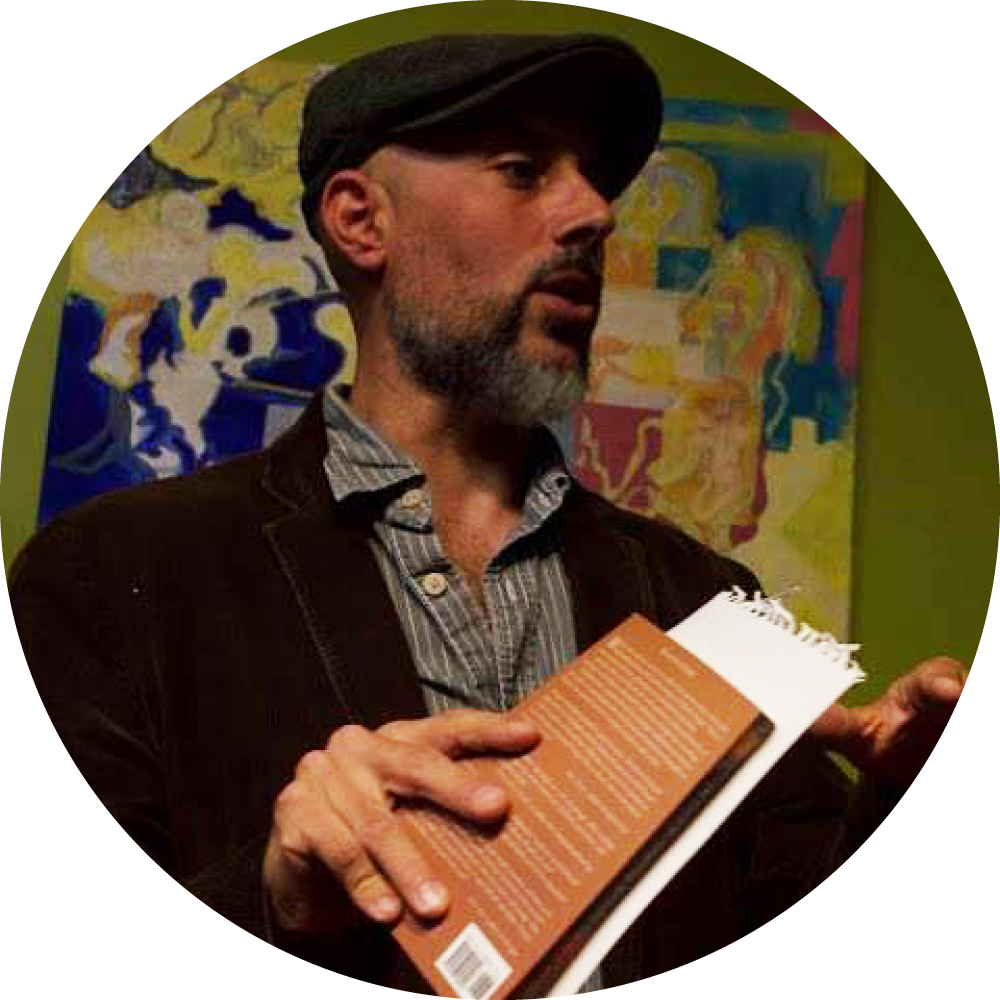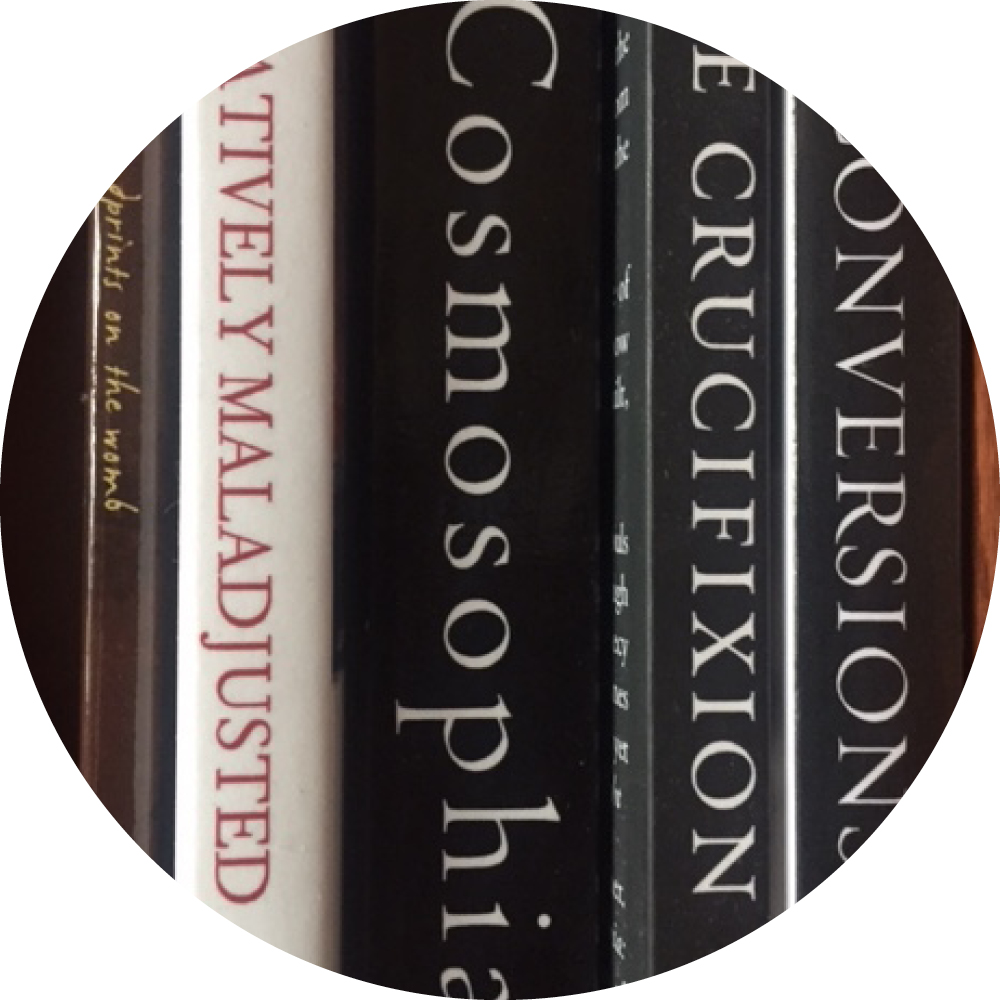Wind at the Tarn
By Katherine Hauswirth
On my third day as a writer in residence at Acadia National Park I got turned around, missing the opportunity to hear the rangers talk about the nesting peregrine falcons on Champlain Mountain. I ended up on Jessup Path, an easy, dappled, forested walkway that wound past a birch bark wigwam and the tiny, trailside Abbe Museum. I snapped photos of hawkweed, and of gooey mushrooms at the base of an old tree. I came to the Tarn (a glacial lake), and the Kane Path allowed me to walk alongside, at some points scrambling over boulders and tumbles of large rocks, at others hopping over a line of flat stones that skirted the water.
It wasn’t an especially breezy day, but the wind picked up tremendously along the Tarn. It whipped my hair noisily around my face. The sun was emerging after days of grey mist, and the wind encircled me as I teetered on a log to see the beaver lodge beyond the brush. I watched dragon- and damselflies land on the stones and fly off, gracing the path with their colors and pulling me forward in fascination. The former were black-bodied “biplanes” with latticed wings and grey-blue segments, the latter turquoise and black works of chiseled art.
The wind felt powerful and familiar. It was a cleansing force, and I welcomed its unexpected “bath” as I traversed the rocks. I decided I needed pictures of the dragon- and damselflies. How exceedingly fun, to be chasing these iridescent insects the way a two- or three-year-old might, even adopting a toddler’s wide gait as I footed the uneven stones.
A profound contentedness spread through me. It was as if the wind had entered me and rushed through every channel of my workings. Words spilled from me unbidden: “Everything is a gift.” I spoke again, startled and joyous and tearful. I heard myself say: “I’m meant to be running along, like a kid, taking pictures of dragonflies.” Immersed in this invigorating holiness, I settled into gentle thought. I was reminded of something important I needed to reclaim: abandon – the ability to completely lose myself, to simply play. I was glad that I hadn’t pushed myself to do a more strenuous hike that afternoon, since I would have missed a chance to skim over the stones, feeling loose and light. I was glad that I had prayed that morning, as I often do, to be fully open to God and to the world. My answer came in an overflowing cup.
As I drove back from the main part of Acadia to the peninsula where I was staying, I thought back on the sacred moments of my morning. This triggered a memory of a similarly striking experience I’d had years earlier, which also involved wind and water. When I got home, I searched older diaries until I hit upon an entry I’d written when Gavin, my now adult son, was only five. I’d been given the gift of a weekend to write at Mercy Center, a spiritual retreat on the edge of the Long Island Sound in Connecticut. How affirming, how joyful to read back what I’d written 10 years earlier, as I sat in the gazebo on a windy day:
Surprised myself by being immediately, spiritually moved. I picked up a part-broken conch, still so beautiful in its form, its patina. The wind blew me, sand grazed me with little stings, and I thought about how God must see aging. Our shell loses its luster, but it shines in select places where it was worn the hardest, or where it took a hard spill. This conch has the decoration of an authentic life – small mollusks attached, some algae, some dirt, some stains. And, yes, it is just a shell – not the real representative of what lived within – but still something to be looked on with love, more compelling with the remnants of time gracing it.
For a moment I was back on that beach, reliving how the wind had spoken powerfully to me there, too, overcoming me when I was a much younger – and as I recall, stressed-out – mother. The wind had moved me in an instant; it had reminded me of what matters. My decade-old words were even more relevant now with my 50th birthday approaching. Someone else can argue the semantics of whether it was the wind or God or my own resourceful synapses that spoke to me. The chosen labels or explanations don’t matter. What does matter is that these experiences were immediate and tangible and real.
I did some searching about the connection between wind and spiritual experiences. Melissa, a new artist friend that I’d met at Acadia, reminded me of Psalm 104, in which God:
“…rides on the wings of the wind.
He makes winds his messengers…”
(NIV)
Searching further, I found a delight. In an article for Theosophy Northwest, Eloise Hart wrote about the meaning of the wind in several traditions, including Native American spirituality. I learned that:
“Navajo babies are ceremoniously presented to their ‘parents,’ the winds who reside in the North, South, East, and West, who give them a ‘Little Wind’ which, hidden in their earfolds where it cannot be seen, thereafter guides them… “
“… The Skagit tribes of America’s Northwest [believe] that Wind primarily is a teacher.… the spiritual quality of sound is more important than the information the sound imparts, so if they do not understand something they hear, rather than asking questions they ‘listen within,’ quietly reflecting on the subject until insights come.”
At Acadia, especially near my temporary residence at Schoodic Point, the wind was always with me. It played on the water and ran up the rocks; it carved paths in the grasses and cooled me during hikes when I stopped to stand on a ridge.
When my family joined me, we took the Sundew Trail, swinging a left when the sign pointed us toward the Ocean Bench. Gavin jumped across the multitude of pink, grey, black, brown, and tan boulders, reveling in the generosity of the sun and our long view of the water. As I watched him I felt the breeze in a continual, gentle caress of my face. No words came forth, but none were needed. All was well. There was so much listening to do.
Katherine Hauswirth would like to thank the Artist-in-Residence program at Acadia National Park for making this experience, and this piece, possible.
About The Author
Katherine Hauswirth
Katherine Hauswirth’s writing often centers on themes of nature and contemplation. Her blog, First Person Naturalist, is a reflection on experiencing and learning about nature in Connecticut. She has been published in forums including The Christian Science Monitor, Orion online, Postconsumers, Pilgrimage, Whole Life Times, The Wayfarer, Connecticut Woodlands, Wilderness House Literary Review, Chronogram, and Seasons. She was awarded a Wesleyan Writers Conference scholarship based on her nature writing in 2014. In 2015, she was awarded the honor of Artist-in-Residence at the Edwin Way Teale memorial sanctuary in Connecticut. She was an Artist-in-Residence at Acadia National Park in 2017 and won first-prize for her nature writing (memoir-vignette category) in the Soul-Making Keats Literary Competition that same year. Her book with Homebound Publications, The Book of Noticing: Collections and Connections on the Trail, launched last spring and received Honorable Mention for General Nonfiction in the 2018 American Society of Journalists and Authors contest.
Re-sources
Re-Imagining Education

Empowering educators to take a deeper look at the stories told in our schools and to re-imagine them in transformative and
nurturing learning spaces.
Learning Opportunities

Classes, workshops, and lectures that help to empower people to re-imagine who they are and their place in the world.
Get Involved

Help the Chicago Wisdom Project realize its mission to re-imagine education through holistic programming that transforms individual, community and world through creative expression.
